Key Highlights
- Antigen tests, like rapid antigen tests, can give you quick results. But these are not as sensitive as molecular or PCR diagnostic tests.
- There are a few types of tests for COVID-19. These include nucleic acid amplification, antigen, and antibody tests. Each kind be good for a different reason.
- A positive result shows you probably have a current infection. You should stay away from others and talk to your healthcare provider.
- A negative result, especially from rapid antigen tests, does not always mean you do not have the virus. You might have to do repeat testing to be sure it is not a false negative.
- Knowing your test results and following CDC rules can help stop the spread of the virus.
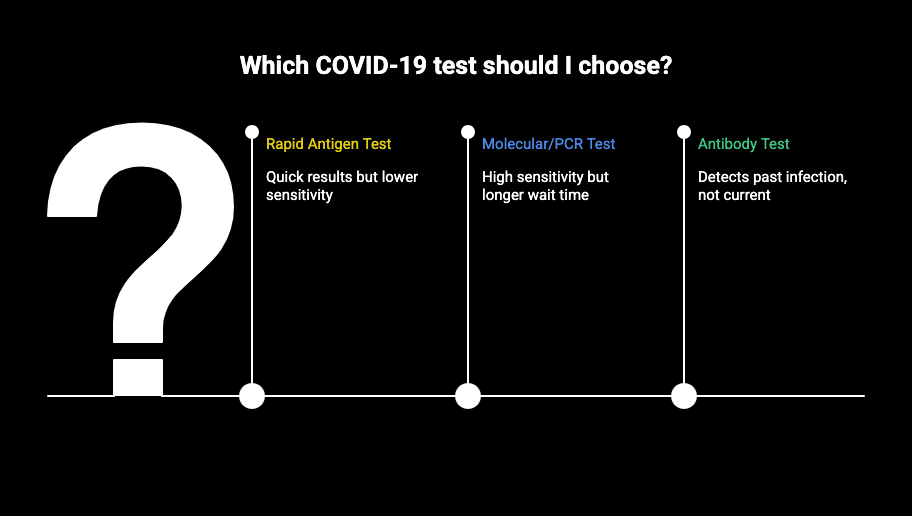
Introduction
COVID-19 is still having an impact on many communities. It is important for you to know the types of tests for this virus and when to use them. Testing can show if there is a current infection. It also helps health care workers make better decisions and stop the spread of the virus. You may need a test if you feel sick, or maybe you just want to know if you have been around the virus. If you know about the types of tests and what each one does, you can make the right choice to protect yourself and those near you.
When Should You Get Tested for COVID-19?
You should get a COVID-19 test if you feel sick, have been near someone who had a positive test, or if you are in a high-risk place. Your test results can help show if you have a current infection. These results also show what you need to do next. The time you take the test also matters. If you get a negative result but you still feel sick, you should repeat testing or talk with a healthcare provider. People at high risk or those who worry about COVID-19 should ask a healthcare provider for help. This will help you find the best test for your needs.
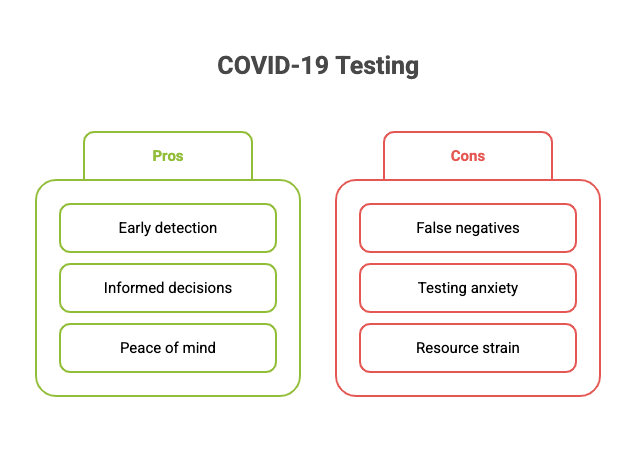
Understanding Exposure Timelines and Testing Windows
After you are around someone who has COVID-19, you should know when to take a test. If you take a test too soon, you might get a false negative. This happens as the virus may not show up on the test at first. The virus needs time in your body before it can be detected. There are some things you should keep in mind about this.
- You should wait at least five full days after you have been around someone with the virus before you get tested, especially if you do not feel sick.
- Repeat testing is important. If you feel sick, you can use antigen tests at least two times over three days. If you do not feel sick, use antigen tests three times over five days.
- Molecular tests, like nucleic acid amplification, can find the virus sooner. These tests are more sensitive than others.
If you get a negative result from your first test but you still feel worried or you begin to get symptoms later, it’s important to do repeat testing. This helps lower the risk of missing a current infection.
Use Cases and Recommendations in the U.S.
In the United States, the FDA gives easy-to-follow advice for COVID-19 testing, mostly during emergency use settings. Your health care provider may recommend different tests to you. Their choice can depend on your own situation, what insurance you have, and the risk factors you have.
- PCR tests are the best choice to confirm a current infection when you need the result to be correct.
- Rapid antigen tests are good when you want to do a fast test at home. But, to get a result you can trust, you should do repeat testing.
- Antibody tests be helpful for people who want additional information about their body’s immune response or a possible past infection. These are not used for finding out if you have a current illness.
Talk with your healthcare provider to find out which test is best for you. Make sure to use tests that are approved by the FDA. This helps ensure the quality and reliability of the test.
At-Home vs. Laboratory COVID-19 Testing
At-home COVID-19 tests, like rapid antigen tests, let you check yourself for the virus from anywhere. These tests give you both ease and privacy. Laboratory tests, such as PCR or molecular tests, are often more accurate, but you may need to wait longer for the results. You can use both types of tests for different situations. Rapid antigen tests are good for quick checks. Laboratory testing is the right choice when you need high accuracy or want a more sensitive test. Always use tests you get from reputable sources and secure websites. This helps keep your sensitive information safe.
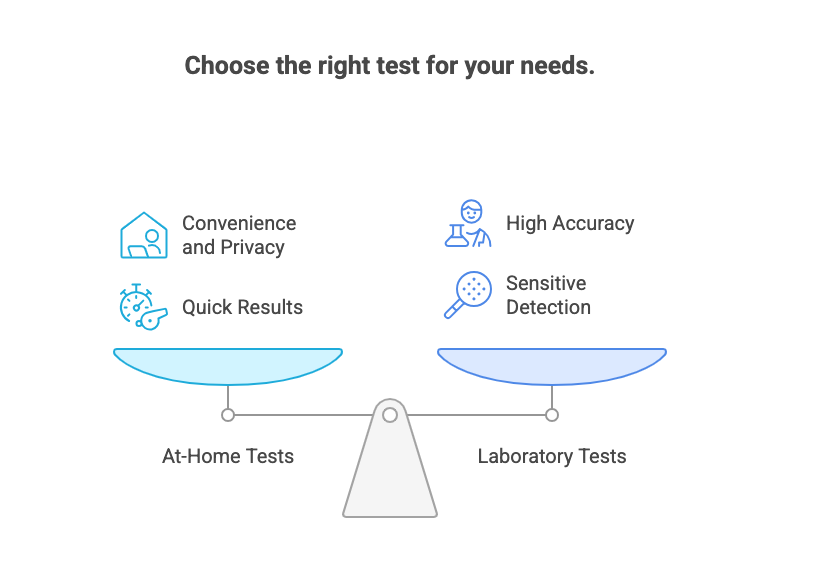
How At-Home Tests Work and When to Use Them
At-home tests help people find out if they are sick in a fast and easy way. Most of these tests are rapid antigen tests. You can do an at-home test by yourself, and you will get your results in about 15 to 30 minutes. You should use an at-home antigen test when you feel symptoms, if you have been close to someone who is sick, or before you get together with others, especially during the holiday season.
- Always read and follow the instructions on the packaging carefully to make sure you do the test right.
- If you get a negative result but still feel sick or just had contact with someone who is sick, it is a good idea to do repeat testing.
- A positive result from an at-home test usually means you have a current infection, so stay at home and contact your healthcare provider. They can give you additional information and tell you what to do next.
At-home tests are a good and important tool that help you take care of your health. These tests can help stop the spread of COVID-19 to other people.
Laboratory Testing Procedures and What to Expect
Laboratory testing for COVID-19 often uses molecular tests like PCR. A healthcare provider will take a sample from you. The sample is then sent to a lab for testing. You might wait up to three days to get your results. But these tests are more accurate than at-home antigen tests.
- Laboratory tests are a good choice if you have medical conditions, are at high risk, or need clear answers after a rapid test comes back negative.
- Your healthcare provider can help you pick the right type of test for what you need and tell you about FDA safety updates.
- You can get lab-based testing from your medical provider, community clinics, or local pharmacies. In many cases, your health insurance may pay for these tests.
If you need testing that is very specific or used to double-check results, the standard is to use laboratory molecular tests.
Interpreting COVID-19 Test Results
Understanding your COVID-19 test results helps you know what steps to take next. A positive test means you likely have a current infection. You should stay away from others and talk to your healthcare provider for advice. A negative test result, especially from rapid antigen tests, does not always mean you are not infected. If you feel sick, you should do repeat testing. If your result is inconclusive or not valid, you need to get more testing or ask a professional. This can help you find out your infection status and keep people around you safe.
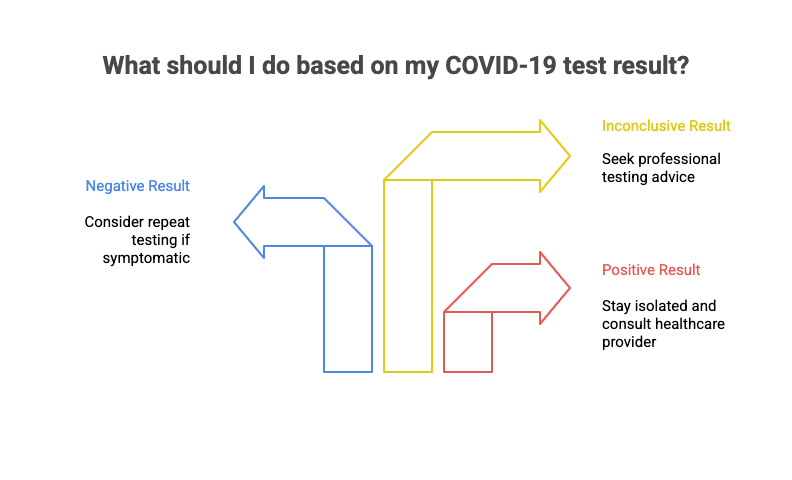
Do Current Tests Detect New Variants?
Most molecular tests, like PCR and nucleic acid amplification, are made to find many types of COVID-19 variants. Rapid antigen tests also often pick up new variants. But, how well these antigen tests work can change. It depends on the type of test and the variant you have.
- If you worry about a new variant, it is best to go with a molecular test. This type of test is the most reliable for finding the virus.
- The FDA and public health agencies check how well these tests work. They do this to make sure the tests still work as the virus changes over time.
- If a variant changes things a lot and makes it hard to detect the virus, you may see new advice or updated tests.
You do not need to look for a different test unless your healthcare provider or people working in public health tell you to.
Adjustments to Testing Recommendations Over Time
Testing rules have changed as people learn more about COVID-19 and its types. The amount of virus, or how much of it is in someone, can change how good the test is at finding it. This is why groups like the FDA update their guidance about testing.
- Repeat testing is now common practice for antigen tests, especially if you get a negative result.
- The way that people do testing might change when new information comes out about how the virus spreads or how different types of tests work.
- Drug administration groups update their advice so the latest science is used. This helps make testing more reliable.
Stay updated with the CDC and FDA news to be sure you are following the latest tips about COVID-19 testing.
What Information Antibody Tests Provide
Antibody tests show if your immune system has reacted to a past COVID-19 infection. They do this by looking for certain antibodies in your blood.
- They show if you had the infection before, but they do not tell if you have an active infection right now.
- These tests can give more facts for research or for studies about how a disease spreads. This additional information can help us understand patterns.
- Some people with medical conditions might use their antibody results to help make healthcare choices. But it is important that they always talk to a provider first.
If you want to know what an antibody test can tell you, remember this. The main use of the test is to show if you had the illness before. It does not tell you if you have it now.
Limitations of Antibody Testing
Antibody tests can give you some idea about your immune response. But these tests should not be used to find out if you have an active infection. There are limits to what antibody tests can do.
- Antibody tests do not show if you have a current infection, or if you are able to spread it to other people.
- The results do not always give sensitive information about how much immunity you have or if you will be protected from new infections.
- Antibody tests are not meant to be used instead of tests that look for a current infection if you feel sick or know you have been close to someone with it.
If you want to get an antibody test, talk to your healthcare provider first. Ask them what the test can tell you and what it cannot. It is good to know how the results can affect your medical care. Your healthcare provider can help you understand what to do next.
Conclusion
Understanding COVID-19 testing is very important during this time. You need to know when to go for a test and what the results mean. The process has several steps and can affect your health and the well-being of people around you. There are different types of tests, and each be used for something different. Some are for finding out if you have COVID-19 right now, and others can say if you had it before.
As new variants show up, it is good to keep up with the latest testing advice. Getting tested at the right time and following these guidelines can really help you take care of your own health and those near you. If you feel the need for advice made just for you, talk to a healthcare expert. They can help you know the best steps to take. Keep looking out for your health and that of people around you.
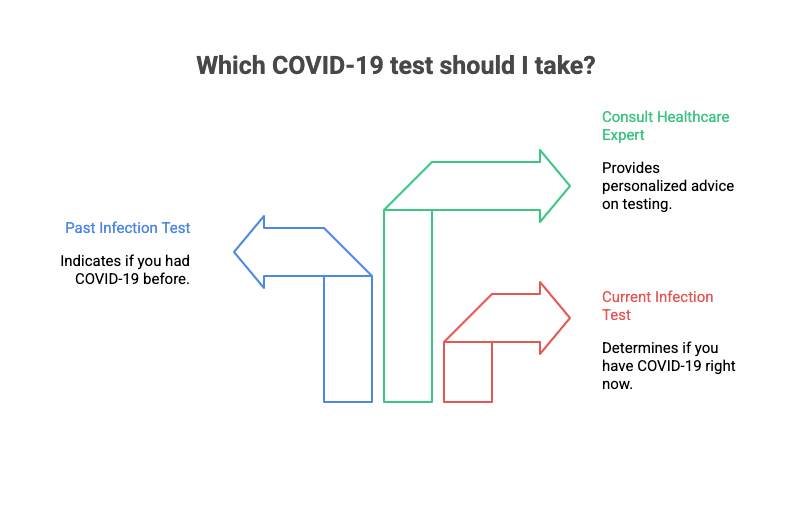
Frequently Asked Questions
How quickly will I get my COVID-19 test results?
Rapid antigen and at-home tests can give you results in about 15 to 30 minutes. A laboratory test, like a PCR test, takes more time. It can take up to 1 to 3 days to get your result back. The time it takes depends on the type of test you use and where you go to have it processed.
Do I need a different COVID-19 test for new variants?
Most COVID-19 tests work to find new types of the virus. This includes both molecular and antigen tests, like rapid antigen tests. There is no need to use a different test at this time. You only have to get another one if health groups say so because of big changes in the virus. For now, current tests help doctors and people to know if you have COVID-19 or not.
What should I do if my at-home test is positive?
If you get a positive result on your at-home test, you need to stay away from other people to stop the virus spreading. Tell people you have been near, and get in touch with a healthcare provider for advice on what to do next. This could mean getting a PCR test and watching your symptoms. Always follow what your local health rules say about reporting and what steps to take next.


